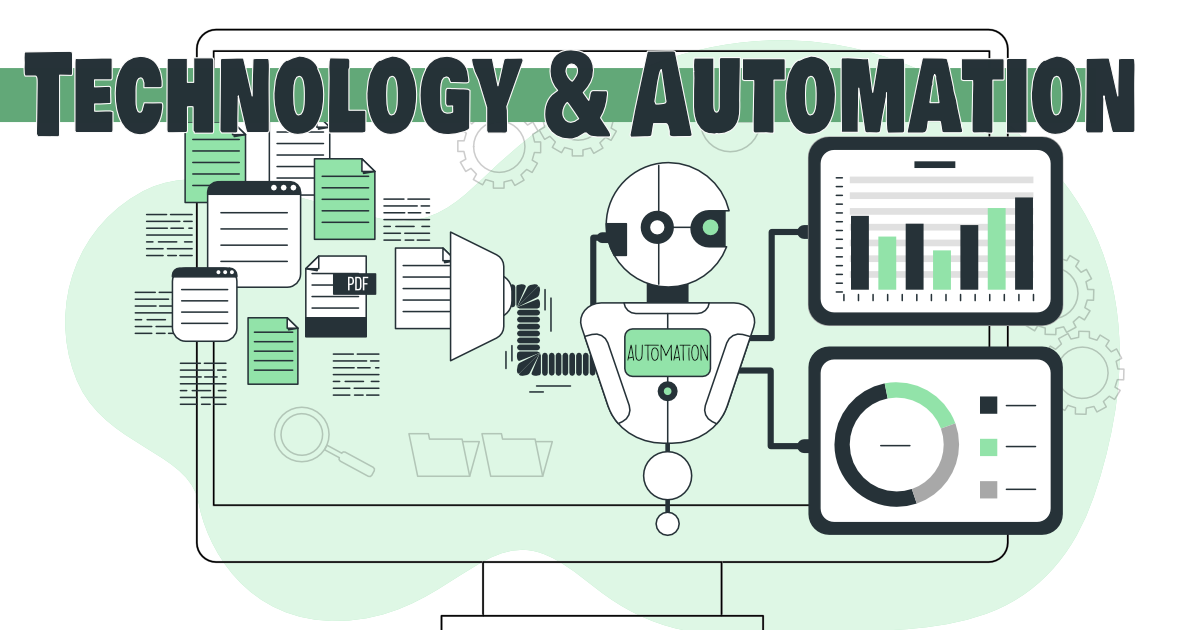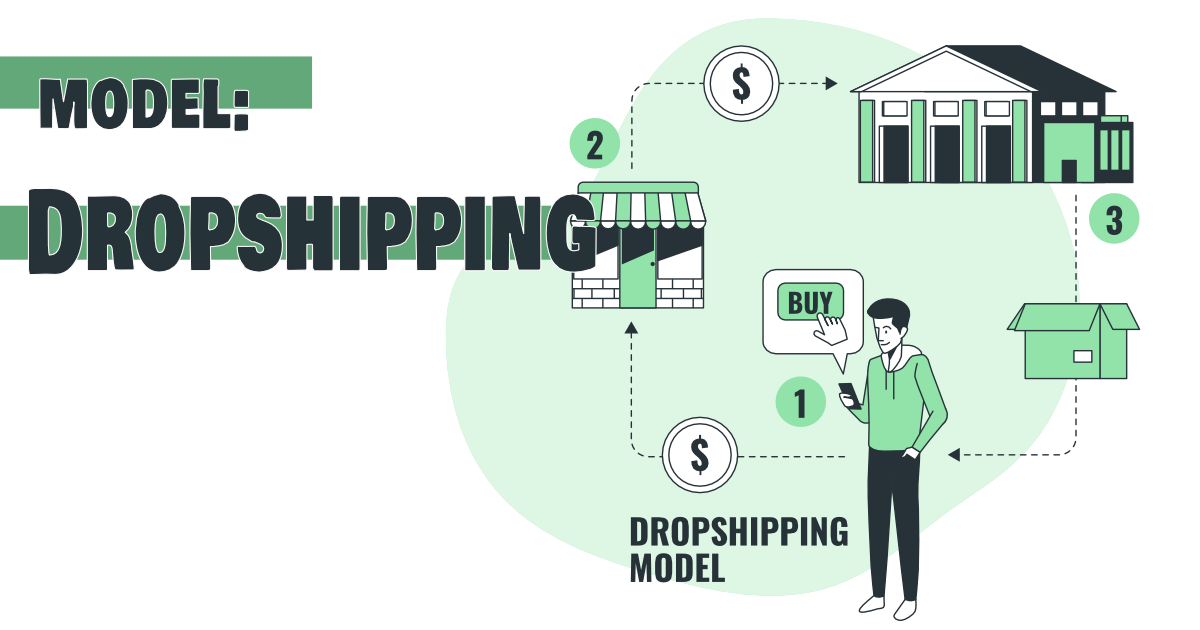The role of technology and automation in scaling a business is becoming increasingly important in today’s fast-paced business environment. As businesses grow, the need for efficient and cost-effective solutions becomes more critical. Technology and automation can help businesses scale by increasing efficiency, reducing costs, and streamlining processes. In this article, we will explore how technology and automation can be leveraged to scale a business and drive growth. We will discuss the benefits of automation, the different types of technology solutions available, and the steps that businesses can take to implement technology and automation in their operations. Furthermore, we will examine the role of automation in the scaling of a business and how it can be used to improve efficiency, reduce costs, and drive growth.
Understanding the importance of technology and automation in scaling a business
Tips for identifying and prioritizing areas of the business that can be automated
Identifying and prioritizing areas of the business that can be automated is essential for scaling a business and driving growth. Automation can help to increase efficiency, reduce costs, and streamline processes, allowing businesses to focus on their core competencies and drive growth. Here are a few tips for identifying and prioritizing areas of the business that can be automated:
- Identify repetitive and time-consuming tasks: Identify repetitive and time-consuming tasks that are taking up a significant amount of time and resources. These tasks are often prime candidates for automation as they can be easily automated using technology solutions such as software robots and process automation tools.
- Assess the impact of automation: Assess the impact of automation on the business by considering factors such as cost savings, increased efficiency, and improved accuracy. Prioritize areas of the business that will have the greatest impact when automated.
- Look for areas with high error rates: Look for areas of the business that have high error rates and consider automating these processes to improve accuracy and reduce errors.
- Identify areas where technology can be used to improve customer service: Identify areas where technology can be used to improve customer service and consider automating these processes to increase efficiency and improve customer satisfaction.
- Consider scalability: Consider the scalability of the automation solution when prioritizing areas of the business to automate. Prioritize areas that will benefit most from automation as the business grows.
- Look for areas where automation can be integrated with other systems: Look for areas where automation can be integrated with other systems to create a seamless workflow and improve efficiency.
- Involve key stakeholders in the process: Involve key stakeholders in the process such as the leadership team, the IT department, and the employees to ensure that the automation solution aligns with the overall strategy of the organization and the needs of the employees.
In conclusion, identifying and prioritizing areas of the business that can be automated is crucial for scaling a business and driving growth. By identifying repetitive and time-consuming tasks, assessing the impact of automation, looking for areas with high error rates, identifying areas where technology can be used to improve customer service, considering scalability, looking for areas where automation can be integrated with other systems, and involving key stakeholders in the process, businesses can effectively identify and prioritize areas of the business that can be automated, leading to increased efficiency, reduced costs, and improved performance.
Techniques for selecting and implementing the right technology solutions
Selecting and implementing the right technology solutions is essential for scaling a business and driving growth. The right technology solutions can help to increase efficiency, reduce costs, and streamline processes, allowing businesses to focus on their core competencies and drive growth. Here are a few techniques for selecting and implementing the right technology solutions:
- Identify Your Business Needs: Before selecting a technology solution, it is essential to identify your business needs. This includes understanding the specific challenges and pain points that your business is facing and identifying the solutions that can address these challenges.
- Research Available Solutions: Research available solutions by looking at different technology providers, reading reviews, and talking to other businesses that have implemented similar solutions.
- Consider Scalability: Consider the scalability of the solution when selecting technology. Prioritize solutions that can grow and adapt with your business as it scales.
- Evaluate the Total Cost of Ownership: Evaluate the total cost of ownership when selecting a technology solution. This includes not only the initial cost but also the ongoing costs such as maintenance, support, and upgrades.
- Look for Integration Opportunities: Look for opportunities to integrate the technology solution with other systems in your organization to create a seamless workflow and improve efficiency.
- Involve key stakeholders in the process: Involve key stakeholders in the process such as the leadership team, the IT department, and the employees to ensure that the technology solution aligns with the overall strategy of the organization and the needs of the employees.
- Test and pilot before implementation: Before implementing the technology solution, test it on a small scale and pilot it to ensure that it meets the expectations and it can be integrated seamlessly with the organization.
In conclusion, selecting and implementing the right technology solutions is essential for scaling a business and driving growth. By identifying your business needs, researching available solutions, considering scalability, evaluating the total cost of ownership, looking for integration opportunities, involving key stakeholders in the process, and testing and piloting before implementation, businesses can effectively select and implement the right technology solutions, leading to increased efficiency, reduced costs, and improved performance.
Strategies for automating repetitive and time-consuming tasks
Automating repetitive and time-consuming tasks is a key strategy for scaling a business and driving growth. Automation can help to increase efficiency, reduce costs, and streamline processes, allowing businesses to focus on their core competencies and drive growth. Here are a few strategies for automating repetitive and time-consuming tasks:
- Identify repetitive and time-consuming tasks: Identify repetitive and time-consuming tasks that are taking up a significant amount of time and resources. These tasks are often prime candidates for automation as they can be easily automated using technology solutions such as software robots and process automation tools.
- Use automation software: Use automation software such as software robots and process automation tools to automate repetitive and time-consuming tasks. These tools can be programmed to perform specific tasks, such as data entry or scheduling, and can run 24/7, increasing efficiency and reducing the need for manual labor.
- Integrate automation with existing systems: Integrate automation with existing systems to create a seamless workflow and improve efficiency. For example, automating data entry and integrating it with your CRM system can improve data accuracy and save time.
- Use AI and Machine Learning: Utilize AI and Machine Learning to automate repetitive and time-consuming tasks such as data analysis and customer service. These technologies can be programmed to learn and adapt over time, increasing efficiency and reducing the need for manual labor.
- Assign automation responsibilities: Assign specific automation responsibilities to employees, such as monitoring and maintaining automation systems, to ensure that automation is being used effectively and efficiently.
- Continuously monitor and optimize: Continuously monitor and optimize automation systems to ensure that they are working as expected and make adjustments as needed.
- Train employees: Provide training to employees on how to use automation systems to ensure that they can work effectively with the new technology.
In conclusion, automating repetitive and time-consuming tasks is a key strategy for scaling a business and driving growth. By identifying repetitive and time-consuming tasks, using automation software, integrating automation with existing systems, using AI and Machine Learning, assigning automation responsibilities, continuously monitoring and optimizing automation systems, and providing training to employees, businesses can effectively automate repetitive and time-consuming tasks, leading to increased efficiency, reduced costs, and improved performance.
How to use data and analytics to track and measure the impact of automation
Using data and analytics to track and measure the impact of automation is essential for understanding the effectiveness of automation efforts and making informed decisions about future automation projects. Data and analytics can help businesses to identify areas where automation is having the greatest impact, as well as areas where additional automation may be needed. Here are a few ways to use data and analytics to track and measure the impact of automation:
- Define key performance indicators (KPIs): Define key performance indicators (KPIs) that will be used to track the impact of automation. These KPIs should be specific, measurable, and aligned with the business goals and objectives.
- Collect and store data: Collect and store data on the performance of automated systems and processes. This data can include metrics such as cost savings, increased efficiency, and improved accuracy.
- Analyze data: Use data analysis tools to analyze the collected data and identify trends, patterns, and opportunities for improvement.
- Track progress over time: Track progress over time by regularly monitoring the KPIs and comparing the results to previous periods. This can help to identify areas where automation is having the greatest impact and areas where additional automation may be needed.
- Communicate results: Communicate the results of the data analysis to key stakeholders, such as the leadership team and employees, to ensure that everyone is aware of the impact of automation and can make informed decisions about future automation projects.
- Continuously monitor and optimize: Continuously monitor the performance of automated systems and processes, and make adjustments as needed to optimize performance.
- Use automation to improve data collection and analysis: Automate data collection and analysis processes to improve efficiency and accuracy.
In conclusion, using data and analytics to track and measure the impact of automation is essential for understanding the effectiveness of automation efforts and making informed decisions about future automation projects. By defining key performance indicators, collecting and storing data, analyzing data, tracking progress over time, communicating results, continuously monitoring and optimizing, and using automation to improve data collection and analysis, businesses can effectively use data and analytics to track and measure the impact of automation, leading to increased efficiency, reduced costs, and improved performance.
The role of Artificial Intelligence and Machine Learning in scaling a business
The role of Artificial Intelligence (AI) and Machine Learning (ML) in scaling a business is becoming increasingly important in today’s fast-paced business environment. AI and ML can help businesses scale by automating repetitive and time-consuming tasks, improving decision-making, and driving growth. In this article, we will explore how AI and ML can be leveraged to scale a business and drive growth. We will discuss the benefits of AI and ML, the different types of AI and ML solutions available, and the steps that businesses can take to implement AI and ML in their operations.
- Automation: AI and ML can be used to automate repetitive and time-consuming tasks, such as data entry and analysis, freeing up time and resources for more important tasks.
- Improved decision-making: AI and ML can be used to analyze large amounts of data and identify patterns, trends, and insights, which can help businesses make better decisions and drive growth.
- Personalization: AI and ML can be used to personalize products and services, which can increase customer satisfaction and drive revenue growth.
- Predictive analytics: AI and ML can be used to predict future customer behavior, sales trends and identify potential opportunities for growth.
- Chatbots and virtual assistants: AI-powered chatbots and virtual assistants can be used to improve customer service and support, increasing efficiency and reducing costs.
- Cybersecurity: AI and ML can be used to improve cybersecurity, by identifying and blocking potential threats before they can cause damage.
- Talent management: AI and ML can be used to improve talent management, by identifying the best candidates for open positions and managing employee performance.
- Continuously learning: AI and ML systems are able to continuously learn and adapt over time, improving their performance and increasing efficiency.
In conclusion, the role of Artificial Intelligence (AI) and Machine Learning (ML) in scaling a business is becoming increasingly important. AI and ML can be used to automate repetitive and time-consuming tasks, improve decision-making, personalize products and services, predict future customer behavior, improve customer service and support, improve cybersecurity, manage talent, and continuously learn and adapt. Businesses that leverage AI and ML can achieve significant cost savings, improve their performance, and drive growth. However, it is important to note that implementing AI and ML is not a one-time event but rather a continuous process. Businesses should continuously monitor and optimize their AI and ML systems, and stay up-to-date with the latest advancements in the field to ensure that they are getting the most out of the technology. Additionally, businesses should also consider the ethical implications of using AI and ML and ensure that their use aligns with their values and the needs of their customers. Overall, the use of AI and ML can be a powerful tool for scaling a business, but it requires careful planning, implementation and management.
Tips for managing and maintaining technology infrastructure
Managing and maintaining technology infrastructure is essential for the smooth operation of a business, and it can be a complex and time-consuming task. Technology infrastructure includes hardware, software, and network systems, and it plays a critical role in the day-to-day operations of a business. Here are a few tips for managing and maintaining technology infrastructure:
- Develop a proactive maintenance plan: Develop a proactive maintenance plan to ensure that technology infrastructure is maintained and updated on a regular basis. This includes regular software updates, backups, and hardware maintenance.
- Regularly assess and upgrade hardware: Regularly assess the hardware used by the business and upgrade as needed to ensure optimal performance and to avoid potential failures.
- Implement security measures: Implement security measures, such as firewalls, anti-virus software, and intrusion detection systems, to protect technology infrastructure from cyber threats.
- Test disaster recovery plans: Test disaster recovery plans regularly to ensure that the business can quickly and effectively recover from any potential disruptions.
- Train employees: Provide training to employees on how to use technology infrastructure, and how to identify and report potential problems.
- Use Cloud-based solutions: Consider using cloud-based solutions, such as Software as a Service (SaaS) and Infrastructure as a Service (IaaS), to reduce the need for in-house hardware and software, and to make it easier to scale the technology infrastructure as the business grows.
- Monitor and track performance: Monitor and track the performance of technology infrastructure, and use the data collected to identify and resolve issues, and to make informed decisions about future upgrades.
- Keep up to date with advancements: Keep up to date with advancements in technology infrastructure, and consider implementing new solutions as needed to improve performance and to stay competitive.
In conclusion, managing and maintaining technology infrastructure is essential for the smooth operation of a business. By developing a proactive maintenance plan, regularly assessing and upgrading hardware, implementing security measures, testing disaster recovery plans, training employees, using cloud-based solutions, monitoring and tracking performance, and keeping up to date with advancements in technology, businesses can effectively manage and maintain their technology infrastructure, leading to increased efficiency, improved performance, and reduced risk of disruptions.
The importance of cybersecurity and data protection when automating a business
The importance of cybersecurity and data protection when automating a business cannot be overstated. Automation increases the amount of data that is collected, stored, and shared, and it also increases the risk of data breaches and cyberattacks. It is crucial for businesses to take steps to protect their data and systems when automating their operations.
- Conduct a risk assessment: Conduct a risk assessment to identify potential vulnerabilities and threats to the organization’s data and systems.
- Implement security measures: Implement security measures such as firewalls, intrusion detection systems, and encryption to protect the organization’s data and systems from cyberattacks.
- Train employees: Provide cybersecurity training to employees to ensure they understand the risks and how to protect against them.
- Regularly update security software: Regularly update security software to ensure that the organization is protected against new and emerging threats.
- Conduct regular backups: Conduct regular backups of the organization’s data to ensure that it can be quickly and easily restored in the event of a data breach or cyberattack.
- Limit access to data: Limit access to sensitive data to only those employees who need it to perform their job functions.
- Use multi-factor authentication: Use multi-factor authentication to protect against unauthorized access to the organization’s data and systems.
- Monitor and track activity: Monitor and track activity on the organization’s networks and systems to detect and respond to potential threats.
In conclusion, cybersecurity and data protection is of the utmost importance when automating a business. The increased use of automation leads to more data being collected, stored, and shared, which in turn increases the risk of data breaches and cyberattacks. Businesses must take proactive steps to protect their data and systems when automating their operations. This includes conducting a risk assessment, implementing security measures, training employees, regularly updating security software, conducting regular backups, limiting access to data, using multi-factor authentication, and monitoring and tracking activity on the organization’s networks and systems. By taking these steps, businesses can reduce the risk of data breaches and cyberattacks and ensure the safety and security of their data and systems.
How to use e-commerce and online platforms to automate sales and customer service
E-commerce and online platforms can be powerful tools for automating sales and customer service, allowing businesses to increase efficiency, reduce costs, and improve customer satisfaction. Here are a few ways to use e-commerce and online platforms to automate sales and customer service:
- Use an e-commerce platform: Use an e-commerce platform, such as Shopify or Magento, to create an online store and automate the sales process. This includes features such as product listings, shopping cart, and checkout.
- Implement automated customer service: Implement automated customer service, such as chatbots and virtual assistants, to handle common customer inquiries and reduce the need for human customer service representatives.
- Automate marketing campaigns: Automate marketing campaigns, such as email marketing and social media advertising, to reach potential customers and increase sales.
- Use analytics: Use analytics tools to track customer behavior, sales trends, and marketing performance, and use this data to optimize the sales and customer service process.
- Integrate with other systems: Integrate e-commerce and online platforms with other systems, such as accounting and inventory management software, to create a seamless workflow and improve efficiency.
- Offer self-service options: Offer self-service options, such as online FAQs and knowledge bases, to allow customers to find answers to their questions without the need for human assistance.
- Personalize the customer experience: Personalize the customer experience by using data such as purchase history and browsing behavior to recommend products and offers.
- Monitor and optimize: Continuously monitor and optimize e-commerce and online platforms, and make adjustments as needed to improve performance and customer satisfaction.
In conclusion, e-commerce and online platforms can be powerful tools for automating sales and customer service. By using an e-commerce platform, implementing automated customer service, automating marketing campaigns, using analytics, integrating with other systems, offering self-service options, personalizing the customer experience, and continuously monitoring and optimizing, businesses can effectively automate sales and customer service, leading to increased efficiency, reduced costs, and improved customer satisfaction.
The role of mobile apps and mobile technology in scaling a business
The role of mobile apps and mobile technology in scaling a business is becoming increasingly important in today’s fast-paced business environment. Mobile apps and technology can help businesses to reach new customers, improve efficiency and drive growth. Here are a few ways in which mobile apps and technology can help businesses to scale:
- Increased reach: Mobile apps and technology can help businesses to reach new customers, by making it easy for customers to access products and services from anywhere, at any time.
- Improved efficiency: Mobile apps and technology can help businesses to improve efficiency by automating tasks, such as inventory management and scheduling, and by providing real-time access to data and insights.
- Personalization: Mobile apps and technology can be used to personalize the customer experience, by using data such as purchase history and browsing behavior to recommend products and offers.
- Better communication: Mobile apps and technology can be used to improve communication between employees and customers, by providing instant messaging and video conferencing capabilities.
- Cost savings: Mobile apps and technology can help businesses to save costs by reducing the need for physical infrastructure, such as brick-and-mortar stores, and by automating tasks that would otherwise require manual labor.
- Increased revenue: Mobile apps and technology can help businesses to increase revenue by making it easy for customers to make purchases and by providing new revenue streams through in-app purchases or subscription models.
- Analyze data: Mobile apps and technology can help businesses to analyze data and track customer behavior, which can be used to make informed decisions about future products or services.
- Use mobile technology for remote work: Mobile technology can be used to enable remote work and to manage remote teams, which can be a great way to increase flexibility and scalability for a business.
In conclusion, the role of mobile apps and mobile technology in scaling a business is becoming increasingly important. By increasing reach, improving efficiency, personalizing the customer experience, improving communication, saving costs, increasing revenue, analyzing data, and using mobile technology for remote work, businesses can effectively use mobile apps and technology to drive growth and scalability.













